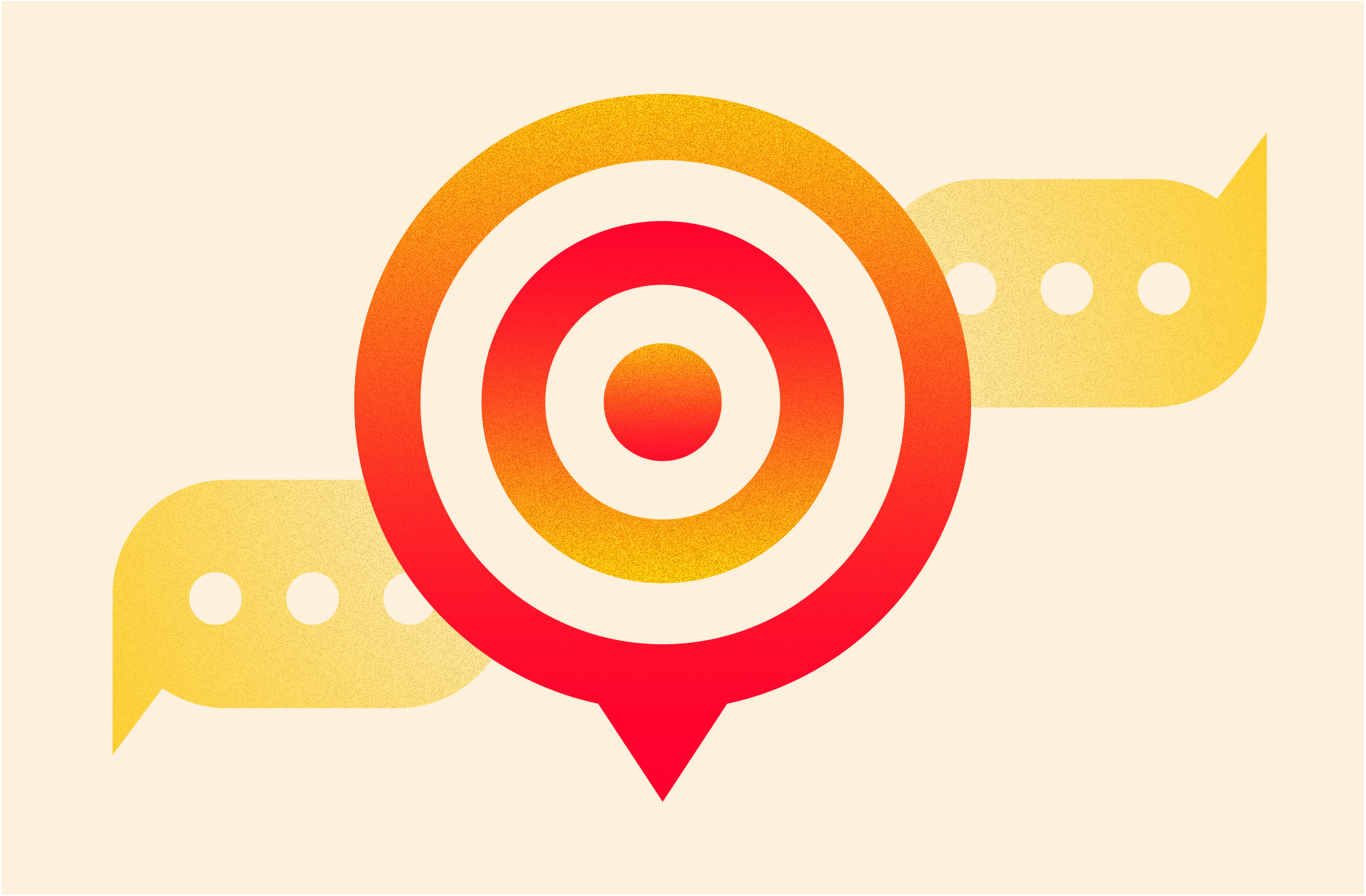Whether you’re launching a new product, service, or brand, if you want to win in your market, you need a strong go-to-market strategy. But according to the Product Market Alliance, only 32% of people say they always have a plan for go-to-market launches—and only 30% have a defined launch process.
In our experience, there are plenty of reasons why people struggle to build a good go-to-market strategy. Sometimes it’a lack of resources. Sometimes it’s a lack of buy-in. Sometimes it’s a lack of knowledge. But none of these things should hold you back—if you have the right tools and guidance.
Over the last nearly 15 years, we’ve helped clients of all sizes build successful GTM strategies, and we can help you do it too. In this guide, we’re breaking down our 9-step process to prep and launch your strategy, along with handy templates and resources to make every step of the process easier.
If you’re ready to bring your launch to life, this is everything you need to do it. Let’s go.

How to Create a Go-to-Market Strategy in 9 Steps
From market analysis, to campaign messaging, to metrics, there are multiple components of a strong GTM strategy. Follow these steps (in order) to make sure you’re fully prepared—and emerging with the strongest strategy possible.
Step 1: Analyze your market.
Before you do anything, you need to acquaint yourself with your market to understand market dynamics, size, growth trends, competitive forces, etc. This is crucial knowledge to build a strategy that actually works with the people you’re trying to target.
- Size your market. First things first, you want to know how much potential demand there is for your product/service. This involves estimating the total addressable market (TAM), the serviceable available market (SAM), and the serviceable obtainable market (SOM). Understanding these metrics will help you gauge the overall market opportunity and set realistic expectations. To get the most accurate picture of your market, triangulate your research (aka use insights from multiple information sources). This helps you get the most realistic big-picture view. Tip: For more details, see Hubspot’s helpful guide to calculate TAM, SAM, and SOM.
- Identify growth trends. What trends are driving industry growth? Innovation? Buying behavior? Consider things like technological advancements, regulatory changes, or social changes. These all greatly influence where the industry is going—and how you can position your brand most effectively. Tip: Take a look at industry articles, reports, research, or customer feedback (if relevant) to identify key trends.
- Audit your competition. Analyze your competitors to understand their strengths and weaknesses. You want to look at every aspect of their brand: their offerings, pricing strategies, marketing tactics, messaging, etc. A competitive analysis will help you identify gaps in the market that your product/service can fill, and develop strategies to make your brand stand out. Tip: Use our competitive analysis template to document your findings.
Step 2: Segment your audience.
If you can segment your market by demographics, psychographics, and behavior, you can better tailor your marketing efforts for your audience. Thus, you need to intimately understand your audience’s needs, pain points, desires, and goals—and understand how your product or service addresses them. Map your audience according to the following.
- Demographic characteristics: List their age, gender, income level, education, and occupation.
- Psychographic characteristics: Understand their lifestyle, values, interests, and attitudes. This insight is particularly helpful for crafting emotionally driven marketing messaging.
- Behavioral characteristics: Analyze their purchasing behavior, brand loyalty, product usage, and feedback. This helps predict how they will interact with your product or service and what factors influence their purchasing decisions.
If you’re not sure how to get this information from your audience, you can look at customer feedback, industry surveys, and market trends. For more ideas, see our guide to find your audience.
Tip: If you’re a B2C company, you’ll want to segment your personas. If you’re a B2B company, you may also want to create Ideal Customer Profiles to identify the type of businesses you want to target. (Find out more about how to create Personas and ICPs.)
Step 3: Value Proposition
A value proposition is an incredibly powerful tool—and it’s one of the most important things you need to successfully launch. A good value prop should set your product or service apart from the competition, excite your audience, and communicate the benefits. But many people go to market with a value prop that is vague or very boring. How do you avoid being one of them?
The best value props blend both emotional and functional benefits that speak to a customer’s emotional and logical desires.
- Functional benefits: These are the core ways your product/service addresses your audience’s pain points and needs—and why it’s unique. Highlight how these benefits solve their problems and why customers should choose you over competitors.
- Emotional benefits: These are the ways that your product/service improves people’s lives. Think about the “better future” you’re promising them. What does that look like? What will they feel?
If you can successfully blend these, you can create a value prop that is truly enticing.
Tip: Your value prop doesn’t need to be more than a line or two. Keep it concise and it will be more compelling. For more best practices, see our guide to write a great value proposition.
Step 4: Positioning and Messaging
Now that you know who you’re targeting and how your product/service benefits them, you need to figure out how to present your product/service in a way that resonates.
- Distill your positioning. Everything you do going forward will be influenced by your unique position in the market. To articulate this, use this simple positioning statement template: “For [target market], [product/service] is a [category] that [benefit] because [reason].”
- Build your brand messaging matrix. If you want your marketing to be effective, you need to tell a consistent story across channels. A brand messaging matrix (including tagline, value prop, and story pillars) is the best tool to do this. Story pillars are especially helpful, as they are the main themes/topics you’ll be talking about, creating content around, and promoting across channels. (They’re also helpful for delivering specific messages to specific audience segments.)
Tip: If you haven’t built out a matrix before, use our free brand messaging template. You should also always look for ways to inject more emotion into your messaging to speak to your audience’s wants and needs. For more ways to do this, see our tips to write copy that hooks your audience.
Step 5: Pricing Strategy
You need to develop a pricing model that maximizes profitability while remaining attractive to consumers. It can be tedious, but you need to consider factors like cost, competition, customer value perception, and market conditions.
- Cost analysis: Start by calculating the total cost of producing and delivering your product/service. This should include fixed and variable costs, as well as any additional expenses related to marketing and distribution.
- Competitive pricing: Analyze your competitors’ pricing strategies to understand the market standards. Determine how your pricing can position you as a competitive yet attractive option for customers.
- Customer Value perception: Consider how much value your target audience places on your product/service. You want to understand their willingness to pay based on the perceived benefits and overall value your brand offers.
Tip: Take a look at Hanover’s top pricing strategy mistakes to make sure you don’t fall into any traps.
Step 6: Sales and Distribution Plan
Next, you’ll want to determine how your product/service will reach your customers. This includes selecting the right distribution channels (direct, indirect, online, retail, etc.) and defining the sales process.
- Select distribution channels. Where does your audience live (particularly online)? What platforms are they on? What methods of communication do they prefer? Whether you’re interacting with them through direct sales, online platforms, retail stores, or partnerships with distributors, it’s important to understand the landscape. Tip: There are a lot of things to consider when choosing (and prioritizing) your channels, from budget and time to reach and relevancy. Follow our guide to narrow down the best channels for your brand.
- Define the sales process. Outline every step in your sales process, from lead gen to after-sales service. Detail how you will approach each step, including:
- Prospecting: How will you attract and qualify leads?
- Preparation: What is your objective for initial contact?
- Approach: How will you interact and build rapport (e.g., phone, email, social media, in person, etc.)?
- Presentation: How will you tailor your pitch to each prospect?
- Handling objections: How will you reaffirm value and alleviate their concerns?
- Closing: What closing techniques will you use to incentivize them?
- Follow-up: How will you guide them into next steps once they close?
- After-sales service: How will you support them to ensure success?
Tip: Set your team up for success throughout the sales process by identifying the tools and resources they should use at each stage. Sales enablement content can be especially helpful. For more on that, find out how to bridge marketing and sales to create the right content.
Step 7: Marketing and Promotion Strategy
If you want to reach the right people, you need a holistic marketing strategy that makes the most of the tools you have at hand—and works seamlessly across channels. This includes a variety of tactics.
- Digital marketing: Use search engine optimization (SEO), pay-per-click (PPC) advertising, social media marketing, and email marketing to reach your target audience online.
- Content marketing: Create valuable and engaging content that educates, entertains, and informs your audience. This can include blog posts, videos, infographics, and webinars. Download our full content strategy toolkit to build a strategy that converts people.
- Public relations: Build credibility and increase visibility with the right PR placements, including press releases, media coverage, and influencer partnerships. (See our tips to get coverage like an agency would.)
- Partnership and alliances: Identify potential partnerships that can amplify your reach and enhance your product offerings. Strategic alliances can provide essential market entry advantages, especially in saturated or highly competitive markets.
Tip: It’s also important to map your buyer journey to create a seamless experience from stage to stage. Use our free buyer journey template to do this if you haven’t done it already.
Step 8: Customer Support and Success
Think about how you will support your customers after the sale. Focus on ways to ensure customer satisfaction, encourage repeat business, and foster brand advocates.
- Customer service: How will you provide excellent customer service to address any issues or concerns that people may have? How can you cultivate more trust and loyalty?
- Training and support: How can you help people use your product/service as effectively as possible? Things like user guides and tutorials can go a long way.
Tip: If you want to stand out, think about ways to add some special sauce into your customer interactions. How can you make people feel valued and excited to interact with you/buy from you again? How can you infuse the after-sales experience with an unexpected bit of delight? These are powerful ways to retain customers.
Step 9: Metrics and KPIs
Measurement is the key to tracking your success, so you need to set clear, measurable goals from the jump.
- Set SMART goals. Establish specific, measurable, achievable, relevant, and time-bound (SMART) goals. These goals will guide your efforts and provide a benchmark for success.
- Identify and monitor KPIs. Which key performance indicators (KPIs) will help you measure your goals? This could include metrics such as sales revenue, customer acquisition cost, conversion rates, and customer satisfaction scores. Track your progress and make informed adjustments to your strategy
Tip: Choosing the right metrics can be tricky. See our guide to choose the right metrics for each stage of the buyer journey (and calculate ROI).
How to Ensure Success
Building a go-to-market strategy can be tedious, but it is always worthwhile work. Just remember: The more you can set yourself up with the right tools, knowledge, and resources, the easier it will be. Most importantly, once you launch and track your progress, use that valuable data to tweak your strategy now—and apply learnings to your future efforts. We hope this guide has been helpful, and we wish you a successful launch. Here’s to you making a splash in your market.
P.S. We know building a GTM strategy on your own can be intimidating. If you need someone to handle the work for you—or support your team—we’d be happy to chat.






This is amazing!